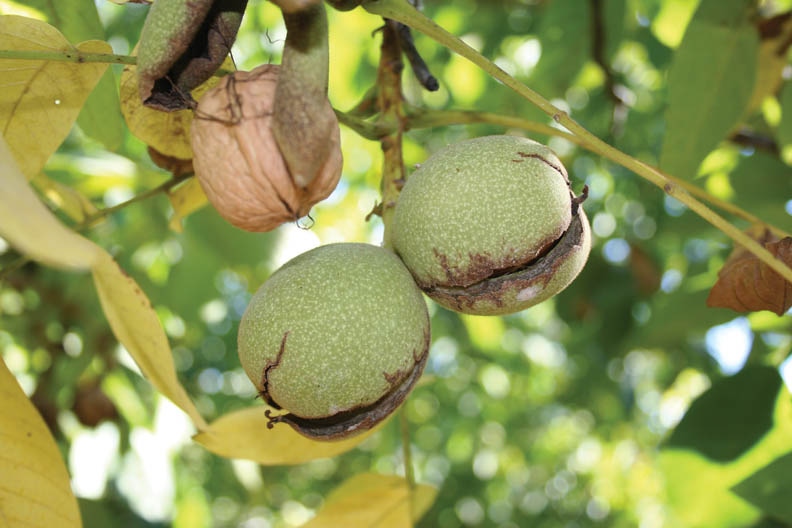
With about half the 2013 crop shipped by late December and farm gate prices of walnuts remaining strong, California’s walnut industry has started 2014 in a very positive position, reports veteran walnut grower Pete Jelavich, Yuba City, Calif.
“Growers, handlers and buyers should all be pleased,” he says.
That’s despite a somewhat disappointing figures showing growers harvested about 488,000 tons (in-shell) of walnuts last year – about 1.5 percent short of earlier production estimates of 495,000 ton.
Shortly before the start of the 2013 harvest, buyers were offering growers $1.80 per pound for in-shell Chandlers. That was up 30 cents from a year earlier. By early December, growers were getting about $2 a pound for their 2013 Chandlers. “That price should remain fairly stable, at least until spring when they may spike up a little as buyers run out of product,” says Jelavich, a member of the Walnut Bargaining Association.
Overall, insect and disease pressure on the 2013 crop was lighter than usual. The reason for last year’s relatively small crop appears to be a drop in the sheer number of nuts produced. The survey for the USDA’s Walnut Objective Measurement Report found the average number of nuts on trees last year – 1,239 – off 10 percent from 2012 and the lowest in 55 years of record keeping.
Assuming three key factors -- water supply isn’t limiting, favorable weather at bloom and typical growing conditions throughout the season -- Jelavich sees the likelihood that California’s walnut production this year could total around 550,000 tons. That compares to the 501,500 tons of walnuts the state’s growers produced in 2010 – their biggest crop ever. In another three or four years, the size of the state’s crop size could reach the 600,000-ton mark, he notes.
This added production will come from trees planted over the past few years that are now beginning to come on line. Also, more growers are planting these trees closer together. At one time, tree spacing of 25 feet between rows and 25 feet within rows or 30 x 30 were common. Now the trend is shifting to spacing between rows and within rows of no more than 10 or 20 feet he reports.
This increased production potential has prompted concern by some growers that the industry is poised to enter a stage of surplus production. Jelavich thinks not.
“Right now, we’re selling everything we’re producing,” he says. “It’s reasonable to expect that if we start producing bigger crops and walnut prices go down 10 to 15 percent, market demand should increase. In the long run, it’s better to have larger crops and a lower price so we can supply our markets, than end up with a short crop and prices that consumers are less willing to pay.”
India optimism
Jelavich points to another reason for optimism about the ability of the industry to sell more walnuts – India. This past year, India opened its market to California walnuts for the first time. In fact, in November, buyers there began receiving their first shipments from the Golden State. This will take time, he say. But, it should create more demand for walnuts in a country with a population comparable to China.
Although India grows walnuts, it’s not enough to meet domestic demand, Jelavich notes, What’s more, the quality isn’t up to that of California walnuts. “Consumers there want higher quality products and with incomes continuing to rise they can afford them,” he says. “Right now I don’t think anyone knows the real potential for selling our walnuts in the Indian market.”
2014 water supplies promises to a major issue for many growers. Limited rain and snowfall in California this winter, combined with a record-dry 2013 will have many of them scrambling to get any available water, whether from storage reservoirs or underground pumping, Jelavich adds. “These systems will be negatively impacted since we are beginning the year with minimal soil moisture,” he says. “Most growers were already irrigating fields in early January to supply needed moisture to the tree root zone.”
More from Western Farm Press
Top 10 agricultural law developments of 2013
About the Author(s)
You May Also Like




